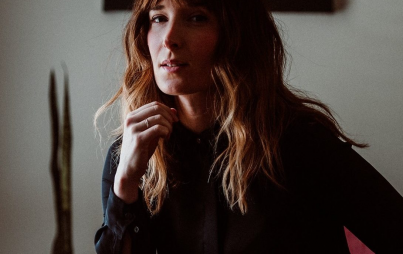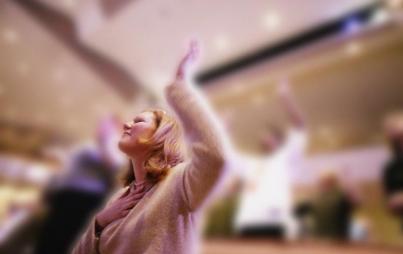
Wearing clothing that shows off my body is a way of publicly declaring that my body is good.
The term "retail therapy" is usually meant somewhat jokingly. When I worked at a preppy clothing store at the mall, the customers buying armloads of overpriced polos and argyle socks often laughed as I rang them up, “It’s retail therapy, right?” But sometimes shopping really can be therapeutic.
For me, after growing up in evangelical purity culture, few things have been as healing and empowering as shopping.
Dressing modestly, I was taught, was my number one job as a Christian woman. I needed to protect the men in my life from the dangerous feminine power my body exuded.
Growing up evangelical, modesty was the name of the game. Private Christian high schools and church youth camps had strict dress codes — no spaghetti straps, short shorts, or skirts above the knee. If I saw another teen from my church in a bikini, I’d mentally slut shame her by assuming she couldn’t be a real Christian. How could she take her faith seriously while showing all that skin? Godly young women covered up.
Dressing modestly, I was taught, was my number one job as a Christian woman. I needed to protect the men in my life from the dangerous feminine power my body exuded. Even before puberty, my body was hazardous to men. Before developing boobs, my mom began policing what I wore to make sure my legs, back, shoulders, or belly button didn’t cause some man's mind to fall into the pedophilia gutter.
In middle school, I read an article for evangelical preteens about how wearing clothes that were “too revealing” or made you look “too attractive” was like waving a raw steak in front of a lion’s nose. If the lion attacked you to get to the steak, is it really the lion’s fault? Dressing modestly was not only about protecting men — it was a way to protect yourself. This was rape culture.
I was taught I was responsible for ensuring I didn’t end up starring in a man’s mental porno. If a man leaned out of his car window to yell obscenities as he rolled by, I’d think I’d done something wrong.
My body was to blame.
To protect the men from falling into sin, my mother and our family’s church had a strict dress code. It made shopping for clothes nearly impossible. I could walk through the entire juniors’ department without finding anything I’d be allowed to wear. Everything was either too tight, clingy, or low cut. But clothing didn’t have to be revealing for it to be banned. Mom said I’d never be allowed to wear a red dress because I’d look like a “bad girl.” I was too curvy for crimson.
When I was a freshman in high school, I thought I’d finally found a tank top that didn’t break any of the modesty rules — the straps were wide enough to cover bra straps, the crew cut neckline ensured no cleavage, and the material didn’t cling. For the first time, I felt like I was wearing something modern. But when I brought the shirt home, Mom said it had to go. The logo was gold metallic and went across my chest. Mom thought I looked slutty. “Nice girls don’t wear gold and black,” she said.
Wardrobe purges were a regular part of my adolescent years. No shirt in my closet was safe from being labeled immodest, and then being bagged up and sent to Goodwill. The worst part of modesty culture wasn’t getting rid of my favorite shirts or how challenging it was to find clothes. It was how the idea that my body was shameful wrapped itself around my identity and sense of self-worth.
My body needed to be covered, I believed, because it was bad.
It wasn’t until my late 20s that I began taking control of my wardrobe, and with it — my body. When I started seeing a therapist to work through the religious trauma and internalized sexism, shopping became weekly therapy homework. Literal retail therapy. Even when I’d gone shopping with instructions from my counselor to try on “immodest clothes,” they’d been off-limits for so many years that I no longer saw them.
A black tank top was the first piece of immodest clothing I fully noticed. It had a low back and neckline guaranteed to show cleavage. And even though it was beautiful, I automatically put it back just like I’d been conditioned to do. This was exactly the sort of thing I needed to try on, so I picked it up again and walked towards the fitting room. When I looked in the mirror, I felt normal, sexy even. So I decided to buy it.
A few weeks later when I was downtown, a man rolled down his window to holler something lewd. I was wearing my new tank top and a pair of pink short shorts. Not long before, I would’ve thought my body was causing him to sin.
But this time I didn’t feel guilt or shame because I knew I wasn’t responsible for this man’s actions or thoughts.
Buying shirts with low necklines, short shorts, leggings, and eventually a bikini helped chip away at the sexist lies I'd internalized. Wearing clothing that shows off my body is a way of publicly declaring that my body is good. There’s nothing shameful or sin-evoking about it, and it doesn’t need to be hidden.








